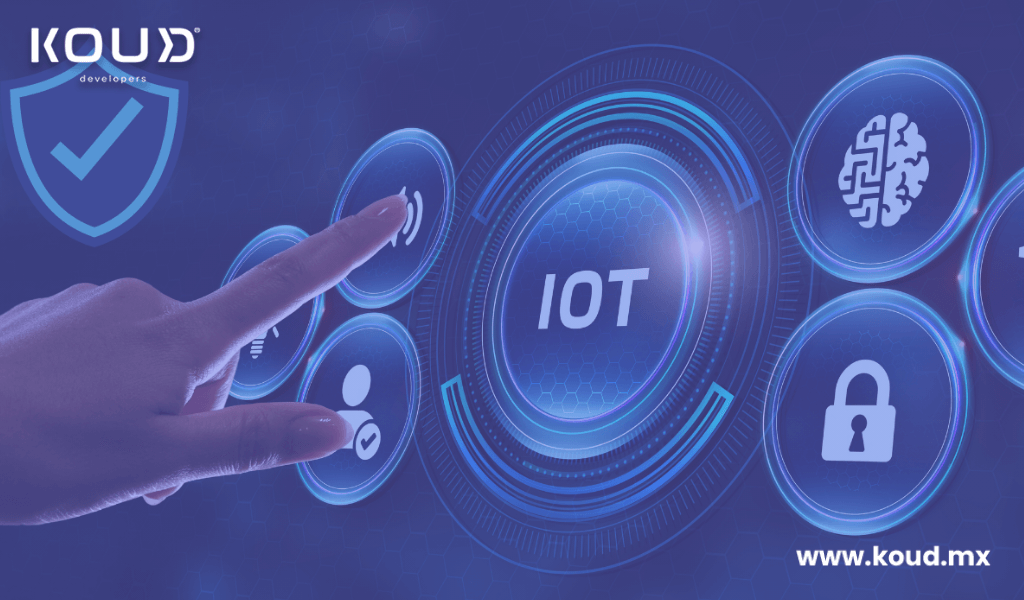What Is the Internet of Things (IoT) and How Is It Integrated into Enterprise Software
The Internet of Things (IoT) is transforming a wide range of industries, from manufacturing to healthcare. Through IoT, physical objects, devices, and systems connect to the Internet, collecting and transmitting data in real time. For businesses, IoT is not just about having smart devices—it opens up new possibilities to improve operational efficiency, automation, and the customer experience.
What Is the Internet of Things (IoT)?
The Internet of Things refers to the network of physical objects—such as devices, sensors, machines, vehicles, and appliances—that are connected to the Internet and capable of sharing data and communicating with one another without direct human intervention. This allows organizations to monitor, control, and optimize processes remotely and in real time.
Common examples of IoT devices include:
- Temperature sensors in factories to monitor the work environment.
- Tracking devices in vehicles to manage automobile fleets.
- Smart home appliances like refrigerators and thermostats that can be controlled remotely from a smartphone.
IoT and Its Impact on Enterprise Software
The integration of IoT into enterprise software has revolutionized how organizations manage their operations. Through IoT platforms, data collected from connected devices can be used to make more informed decisions, optimize processes, and predict future events.
Here are some key benefits of integrating IoT into enterprise software:
1. Real-Time Monitoring and Maintenance
Thanks to real-time data collection, companies can continuously monitor their operations and assets. This enables early detection of issues before they become major failures, allowing for predictive maintenance instead of waiting for costly breakdowns.
2. Process Automation
IoT enables the automation of repetitive tasks. For instance, in manufacturing, machines can automatically adjust to changing production conditions, reducing the need for human intervention and improving efficiency.
3. Improved Decision-Making
The data generated by IoT devices offers detailed insights into a company’s operations. This data can be analyzed and processed to make more informed decisions, predict trends, and make proactive adjustments in real time.
4. Supply Chain Optimization
IoT improves traceability and tracking of products across the supply chain. This helps businesses manage inventory more efficiently, reduce waste, and enhance customer satisfaction by offering faster delivery times.
5. Enhanced Customer Experience
In the consumer sector, IoT enables personalized customer experiences. IoT devices can gather information about user preferences and use it to recommend products or services based on previous behavior.
How IoT Is Integrated into Enterprise Software
Integrating IoT into enterprise software involves several technological layers. Here are some of the ways IoT is incorporated into business solutions:
1. IoT Platforms
Specialized platforms like Microsoft Azure IoT, Amazon Web Services (AWS) IoT, and Google Cloud IoT help connect and manage IoT devices. These platforms allow businesses to integrate IoT devices with existing enterprise systems, enabling real-time data collection, processing, and analysis.
2. IoT Middleware
IoT middleware facilitates communication between IoT devices and enterprise applications. This software layer manages the data flow between the hardware (sensors, devices) and the software applications that process it. It also helps ensure data security and proper data management.
3. Integration with ERP and CRM Systems
Enterprise Resource Planning (ERP) and Customer Relationship Management (CRM) systems are essential in many organizations. Integrating IoT with these systems gives companies a more complete view of their operations, improving resource management and customer service.
4. Data Analytics
IoT devices generate large volumes of data. Businesses must use data analytics platforms to process and extract valuable insights. IoT data analysis helps identify patterns, make predictions, and generate reports to guide decision-making.
5. Security and Privacy
Security is a major concern in IoT. Devices must be protected against cyber threats, and collected data must comply with privacy regulations. Companies should invest in security measures to protect both their devices and the data they handle.
Use Cases of IoT in Enterprise Software
1. Fleet Management
Transportation companies use IoT devices to track vehicles, monitor fuel performance, and carry out predictive vehicle maintenance. This not only improves operational efficiency but also reduces costs and enhances safety.
2. Healthcare
In healthcare, IoT devices enable real-time patient monitoring, providing valuable data on their condition and reducing the need for in-person visits. Doctors can use this data to make more accurate and personalized diagnoses.
3. Smart Manufacturing
In manufacturing, IoT devices monitor machines, perform predictive maintenance, and optimize production. This helps reduce downtime and increases efficiency on the factory floor.
4. Retail
In retail, IoT helps improve inventory management, track customer behavior in stores, and offer personalized experiences, such as discounts based on user preferences.
Empresa
- Nosotros somos
Somos una empresa mexicana con más de 12 años de trayectoria en la industria
Servicios
- Desarrollo de Software a la medida
- Staffing TI
- Headhunting TI
Contacto
- +52 1 33 2342 9770
- letskoud@qa.koud.mx
- Av. Patria 2085 int. 175 piso 1 puerta de hierro Zapopan Ja. 45116


